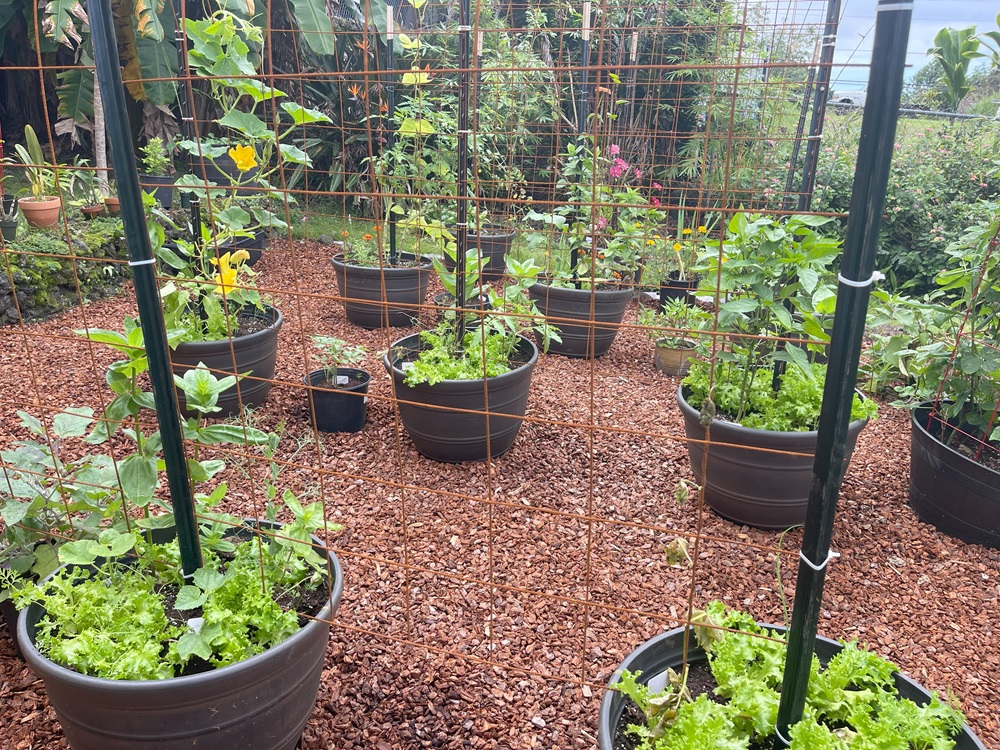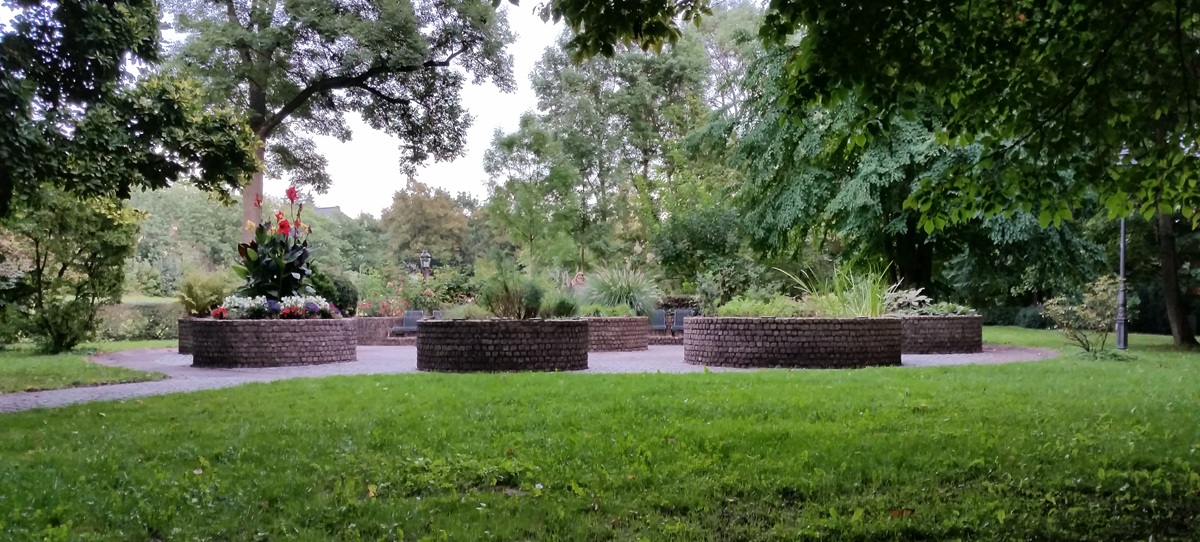Gardening in a small space comes with its challenges, but I’ve found a system that works beautifully—my own made-up version of chaos gardening blended with companion planting. By growing a diverse mix of plants together in my container garden with trellises, I maximize space, encourage healthy plant relationships, attract pollinators, and create a thriving, resilient ecosystem.
What is Chaos Gardening?
Chaos gardening is all about letting nature take the lead. Instead of rigidly organizing plants in rows or sections, this method involves scattering seeds or planting a variety of crops together in a free-flowing, natural way. The goal is to create a diverse, self-supporting ecosystem where plants grow in harmony, much like they do in the wild.
Advantages of Chaos Gardening:
- Biodiversity Boost: A wide range of plants attracts more pollinators and beneficial insects, improving pollination rates and reducing pest issues.
- Less Disease & Pests: Mixing up plant types makes it harder for pests to spread and reduces the likelihood of plant-specific diseases wiping out an entire section.
- Weed Suppression: A dense mix of plants acts as a living mulch, covering the soil and leaving little room for weeds.
- Soil Health Improvement: With a variety of root structures in play, soil nutrients are used more efficiently, reducing depletion.
- Surprise Harvests: Because seeds are often scattered, you get unexpected growth patterns—sometimes with happy surprises.
Disadvantages of Chaos Gardening:
- Less Predictability: If you like strict organization, chaos gardening might feel a little too wild.
- Crowding Issues: Some plants may compete too much for nutrients, water, or light if not well-balanced.
- Difficult Harvesting: With everything growing in a more natural, tangled way, finding and picking produce can take extra time and effort.
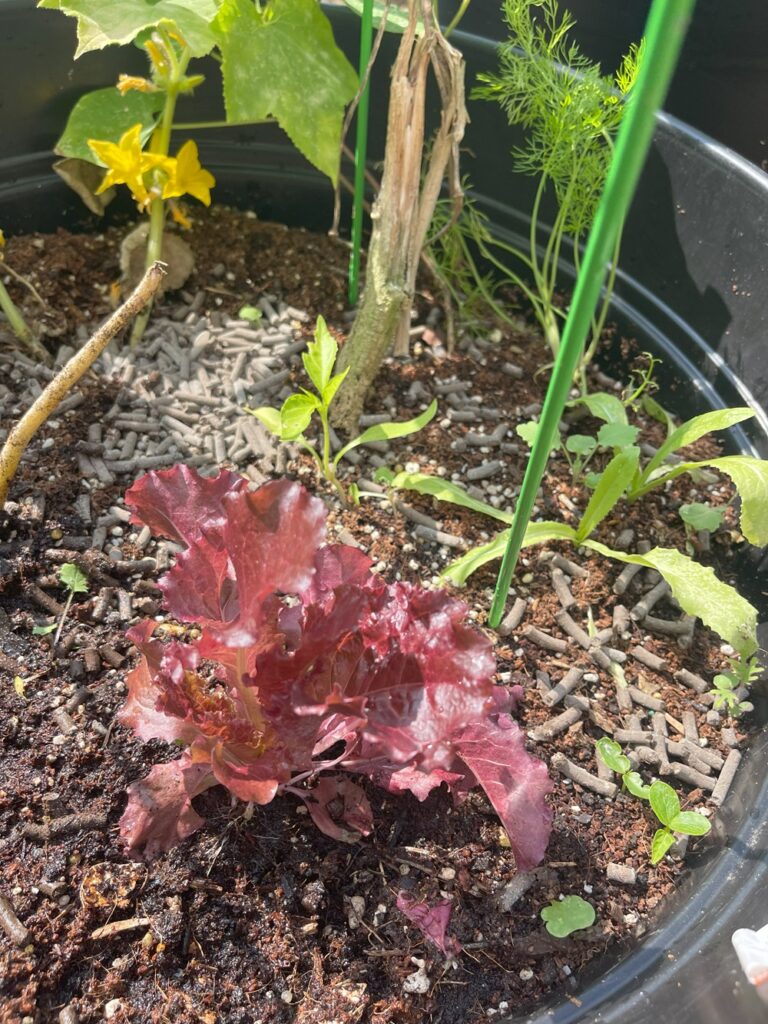
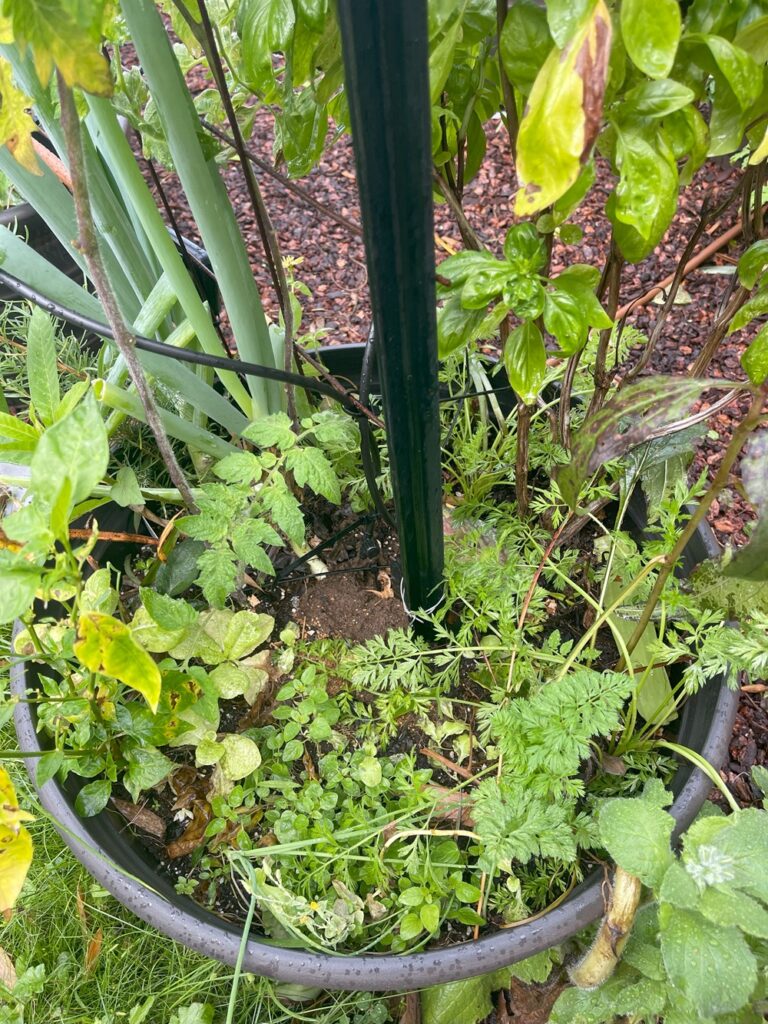
What is Companion Planting?
Companion planting is a more strategic approach to growing plants together, based on how they benefit each other. Some plants help repel pests, improve soil nutrients, or enhance the growth of their neighbors.
Classic Companion Planting Examples:
- Tomatoes & Basil: Basil enhances tomato flavor and deters pests like aphids.
- Carrots & Onions: Onions repel carrot flies, while carrots help aerate the soil.
- Beans & Corn: Beans fix nitrogen in the soil, helping corn grow stronger.
Advantages of Companion Planting:
- Better Growth: Certain plant combinations improve nutrient uptake and protect against diseases.
- Pest Control: Some plants naturally deter common garden pests, reducing the need for intervention.
- Improved Pollination: Flowering plants mixed in with vegetables attract bees and butterflies, increasing yields.
Disadvantages of Companion Planting:
- Planning Required: You have to research and plan your plant pairings carefully.
- Spacing Issues: Some companions do well together, but only if they have enough space—cramming them too close can reduce benefits.
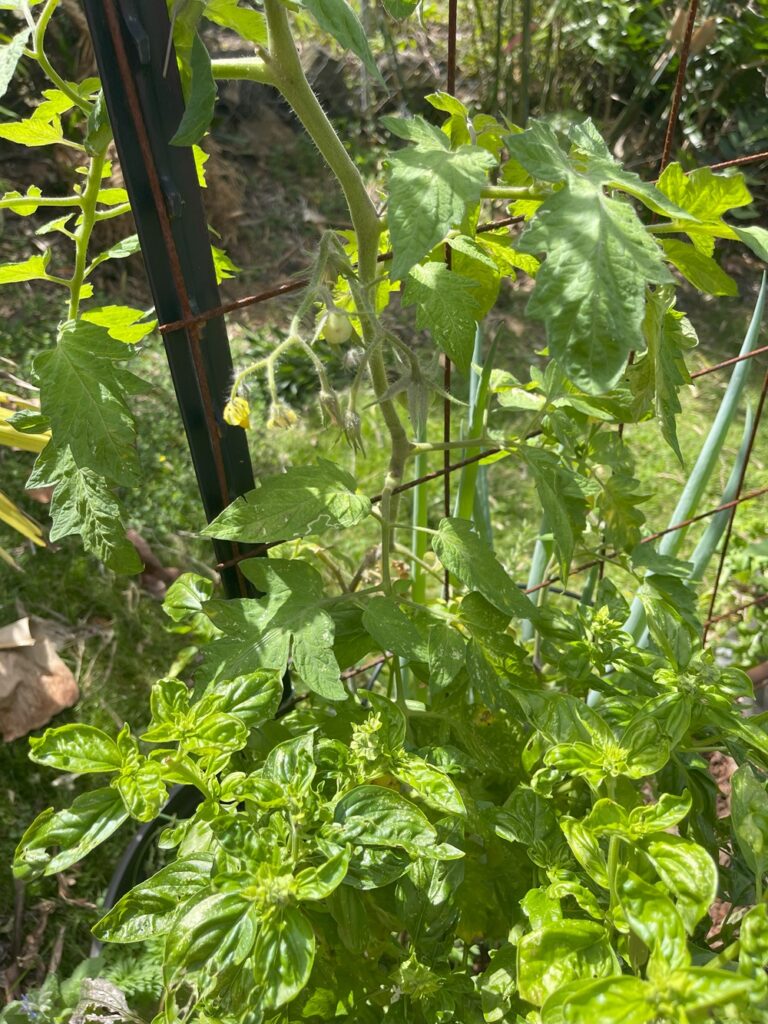
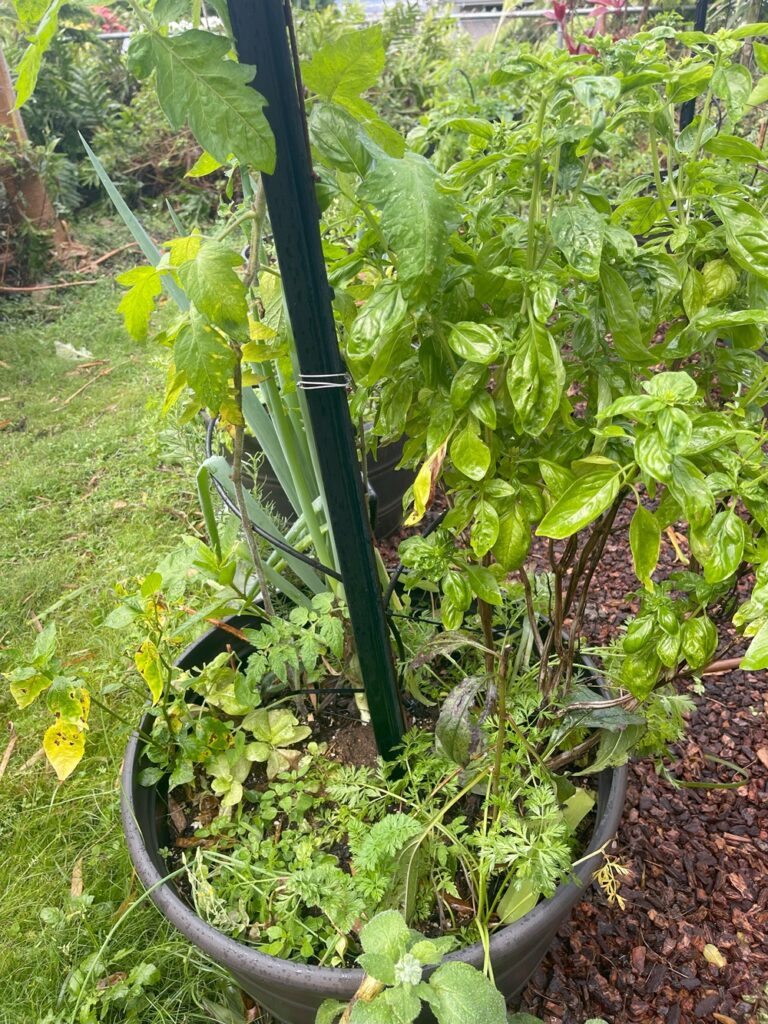
My Hybrid Approach: Chaos + Companion Planting
I love the wild, natural feel of chaos gardening, but I also want the benefits of strategic plant pairings—so I combine both!
Instead of planting in neat rows, I mix my crops in a way that considers both natural biodiversity and beneficial plant relationships. Here’s how I do it in my container garden with trellises:
Layered Heights for Space Efficiency:
- Trellised plants like tomatoes, cucumbers, and beans grow vertically, creating shade for heat-sensitive crops like lettuce and carrots.
- Low-growing herbs and flowers fill gaps, acting as living mulch to retain moisture and prevent weeds.
Companion Planting Principles for Harmony:
- I keep good neighbors together: Basil near tomatoes, onions near carrots, and peppers interspersed with herbs like oregano and rosemary to deter pests.
- I avoid bad combinations (no beans next to onions, since they stunt each other’s growth).
Encouraging Pollinators & Pest Control Naturally:
- I mix flowers like marigolds, nasturtiums, and zinnias in my containers to attract pollinators and beneficial insects.
- Strong-scented herbs like rosemary and mint help repel unwanted pests.
Self-Sustaining Soil Health & Moisture Retention:
- A dense plant mix helps prevent evaporation, keeping the soil cool and moist for longer.
- I make my own soil mix using compost, coconut coir, and pelletized chicken manure to create a nutrient-rich environment for all my plants.
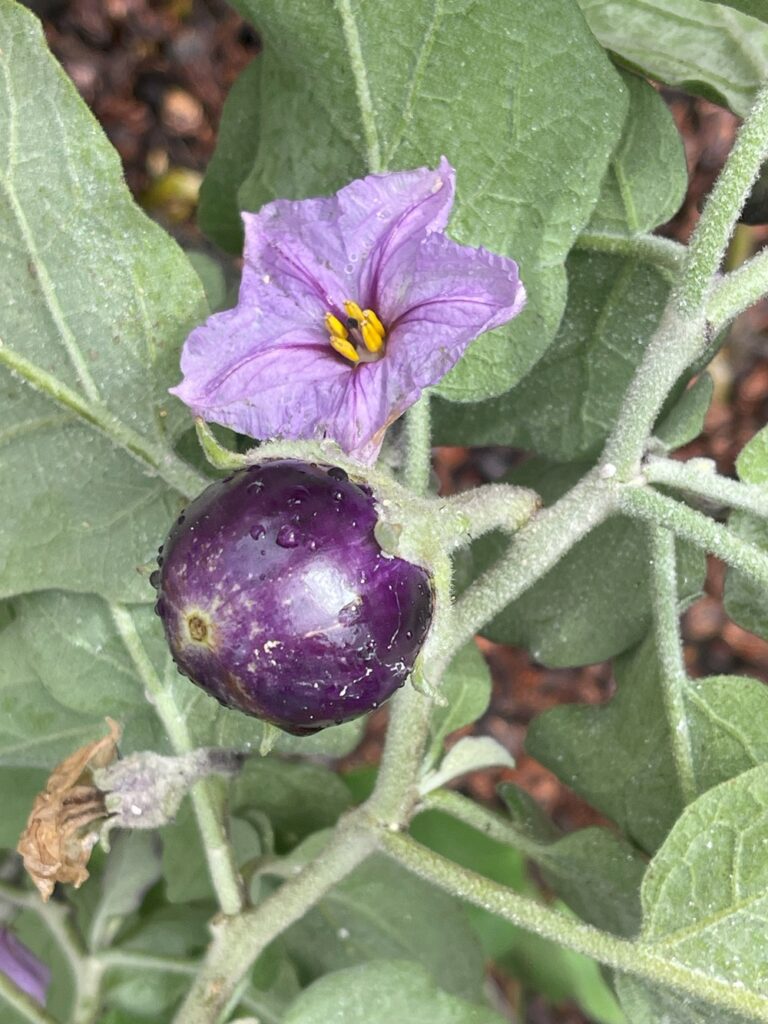
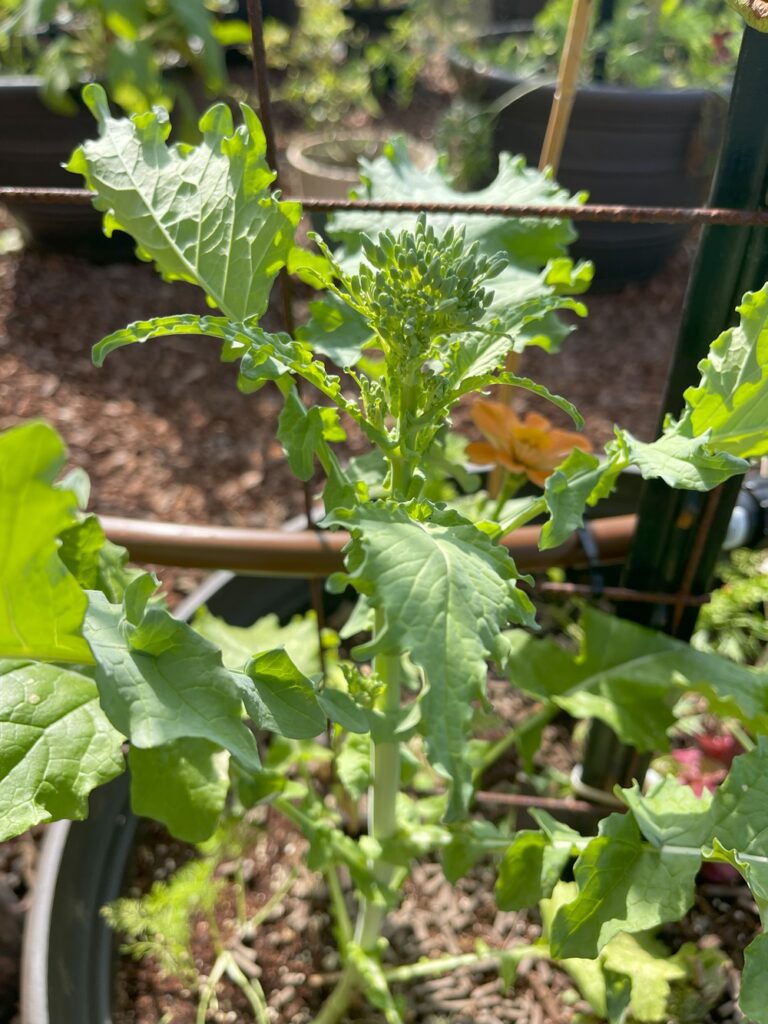
Final Thoughts: The Best of Both Worlds
By combining chaos gardening’s natural, wild approach with companion planting’s strategic pairings, I’ve created a thriving, small-space garden that:
✔️ Maximizes variety in a small space
✔️ Reduces pests naturally
✔️ Supports healthier soil and plant growth
✔️ Retains moisture and reduces weeds
✔️ Attracts pollinators for better harvests
It may look a little untamed, but that’s part of the beauty! My garden is an ever-changing, thriving ecosystem that provides fresh food, supports biodiversity, and works with nature rather than against it.
Have you tried chaos gardening or companion planting? Let’s talk in the comments—I’d love to hear about your experiences!

